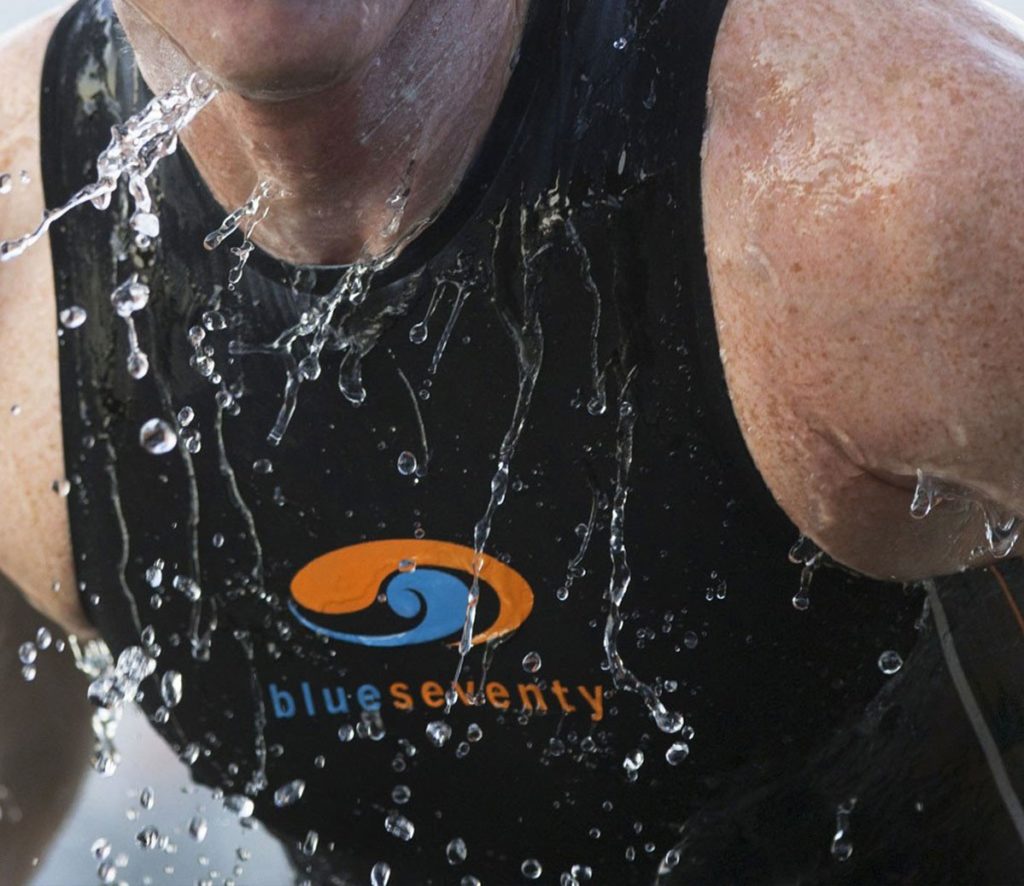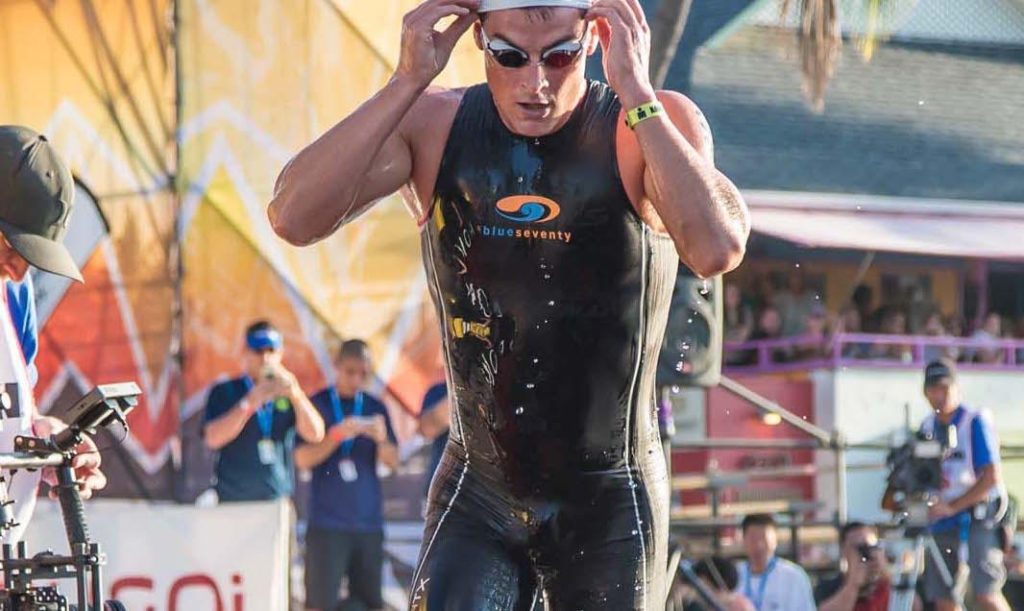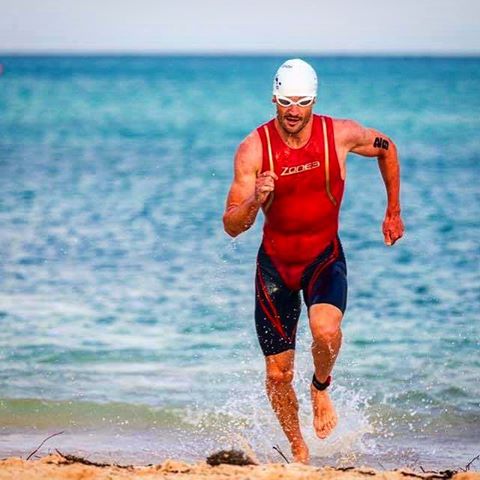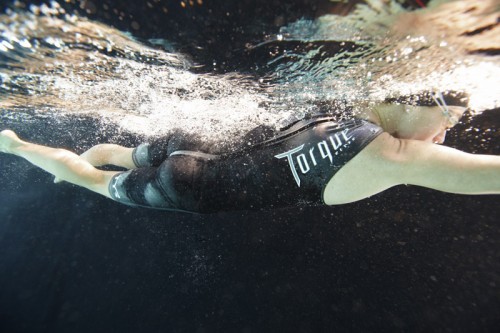The swimskin is one of the newest pieces of apparel in triathlon. As a thinner and smaller replacement for a wetsuit, swimskins are growing in popularity for warm-water triathlons. For triathletes who compete in swimming environments where wetsuits are not allowed, the swimskin is the perfect piece of gear to reduce friction in the water and shave valuable time off your swim.
When should I consider a swim skin?
While a wetsuit is still the best in terms of offering buoyancy, warmth and speed, the swimskin is a great alternative when racing in non-wetsuit legal races to provide an advantage over traditional triathlon racing suits. You will want to consider buying a swimskin if you are racing in areas with mild temperatures. For WTC events, wetsuits are not allowed in water temperatures above 76.1 °F. The USA Triathlon rules state that wetsuits are not allowed in water temperatures above 78 °F. A swimskin is an excellent option if you will be swimming in small bodies of water or areas where the temperatures get high.
What is a swimskin in the first place?
If you have never heard of a swimskin, they are a skin-tight “speedsuit” that goes over your tri suit or race kit and extends from the knees to the shoulders. They do not offer buoyancy or warmth, but the compression allows you to maintain speed and hydrodynamics while swimming through the water. The suit is meant to smooth out the contours of your body and race kit so you can glide through the water and exert less effort. By making your body smoother and smaller, these skins enhance your speed by reducing friction that typical race kits produce against the water.
Originally, swimskins came out with no sleeves; however, more brands are now offering sleeved versions as more triathletes use sleeved tri suits. In past years, you could not wear a race kit that had sleeves under your swimskin. This meant that you had to roll up your sleeves or roll down your race kit to your waist underneath the swimskin. In 2016, the WTC changed the rules that allow sleeves above the elbow to be worn under your swimskin.
How should a swimskin fit?
The swimskin should fit your body very tightly. In most cases, they require a friend to help you zip it up. If they fit too loosely and the suit is flapping against your body, then the features that reduce drag will actually do the opposite. This is a piece of compression equipment, so it should feel tight. Keep in mind that it will feel much different once you get in the water than it will outside of it. Although each person has a different preference, you must choose the swimskin that is most comfortable to you.
What are the performance benefits?
While swimskins are fairly new, there have been some studies done on their performance. In a pool test by the U.S. Olympic swim team, swimskims saved an average of just over 2 seconds per 100 yards when compared to a typical training suit. In comparison, the wetsuit shaved off 6 seconds per 100 yards against the training suit.
There are several major races that are typically borderline non-wetsuit races. Those include the Ironman World Championships, 70.3 World Championships, Ironman Texas, Ironman Chattanooga, Ironman Louisville, Honu 70.3, Eagleman 70.3, Buffalo Springs 70.3, Muncie 70.3, Racine 70.3, Ohio 70.3, Boulder 70.3, Maine 70.3, Atlantic City 70.3, Augusta 70.3, New Orleans 70.3 and any local race that occurs in the summertime.
What are the key features?
If you think a swimskin would be beneficial to you, there are many brands to choose from. While each one has been tested and designed to enhance speed, there are differences in fit and feel. Some of the most popular brands include Blueseventy, TYR, and Zone3. Here are some features of each swimskin.

Differentiator: Advanced ultrasonic welded seams
Building on ten years of swimskin development, the PZ4TX swimskin features advanced ultrasonic welded seams for reduced drag, which means that the seams are welded together using radio frequency and heat to melt the edges together for a stronger seam. With a breathable material on the back of the suit, it helps regulate your temperature while in the warm water. This suit actually does not have a lanyard attached to the zipper to reduce friction the lanyard may cause in the water. The zipper locks in place when pointed down and unzips easily when pointed up.
Differentiator: Revolutionary fabric, elite athlete feedback
Zone3’s latest suit is built upon seven years of testing, elite athlete feedback, and thousands of customer demos. Based on the extensive testing, Zone3 chose the revolutionary X2R woven fabric with glued and heat bonded seams for less drag and ultimate speed. The fabric is one of the lightest hydrophobic materials available. The legs have a fabric called Energy-D, which offers more compression so that your legs glide effortlessly through the water. There is a lanyard attached to the zipper to allow for easier transitions.
Differentiator: Double-layer technology
The Torque Swimskin Series is the latest of TYRs offerings. This swimskin is constructed with two layers, a hydrophilic outer layer that works with the water and a hydrophobic inner layer that repels water to keep you dry. The fabric is a composite knit fabric that allows your body to move freely. Each suit has a coil zipper for a quick transition and a beaded grip on the legs so that the suit will attach to your body and not move around in the water.
At the end of the day, each brand offers countless benefits and the features have been tested extensively. Many of these suits offer similar race times, so it really comes down to the feel of each suit. Whichever brand swimskin suits your fancy, the data is in and swimskins deliver that little extra advantage when it matters most.
 About the Author: Alyssa is a writer and the wife of an Ironman and TriSports Ambassador. Not much of an athlete herself, she has learned the sport of triathlon from her husband over his years of competition. Now she wants to share what she has learned as a spectator with other triathlete supporters.
About the Author: Alyssa is a writer and the wife of an Ironman and TriSports Ambassador. Not much of an athlete herself, she has learned the sport of triathlon from her husband over his years of competition. Now she wants to share what she has learned as a spectator with other triathlete supporters.



